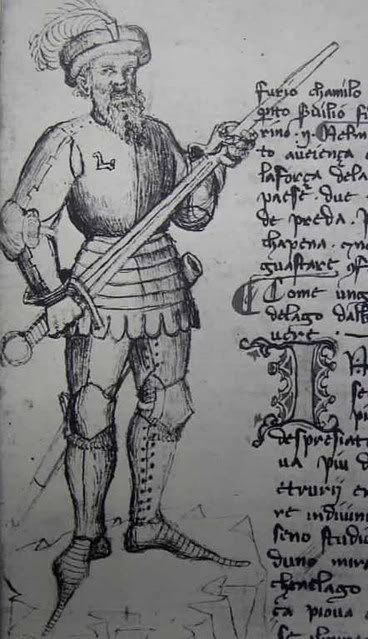What I've seen has been a few cases of leg armour being laced to itself rather than hinged or strapped-and-buckled. I wouldn't be surprised to see the lace-up (it looks like a zipper-job -- think of a very tight version of shoelaces) on something fabric like gamboised cuisses, but these aren't. There are two notable examples here on cuisses, and two on greaves, and I'd like to get some opinions and comments.
First, on the inside of the cuisses on the effigy of Sir Richard Pembridge (of helmet fame). Note the pattern that seems to indicate there is a seam on the inside of the thighs held together by tied cord. I can only assume that he is actually wearing metal cuisses by this point (1375), and the effigy certainly seems to indicate it's a solid -- not fabric, studded, or padded -- cuisse. What do we make of this?

The second cuisse example is from the effigy of Lodewijk (Ludwig) van Lichtervelde (1380). It is similar to the Pembridge effigy, but it seems to have the lacing on some sort of border surface. Ideas?

Now, on to greaves.
What I'm noticing in some cases seems to be cased greaves -- a full front and back -- but there is a substantial gap between the two, and they are tied on in the manner of lacing up shoes.
The first is the effigy of Hartrad von Schönecken (1351). Not the serious gaposis. This gives me an idea for constructing cased greaves that may not fit perfectly, but is still clearly documentable. (It also gives me an excuse to make "smaller" greaves that I can diet into.)

The second greaves set is on the effigy of Frederik von Drakenborch (1360). His seems to be a better fit (there is no gap) but is structurally identical to the pattern seen on the Pembridge cuisses. Ideas?

Is there a particular type of construction indicated? Are we looking at metal, or leather?
Effingham

